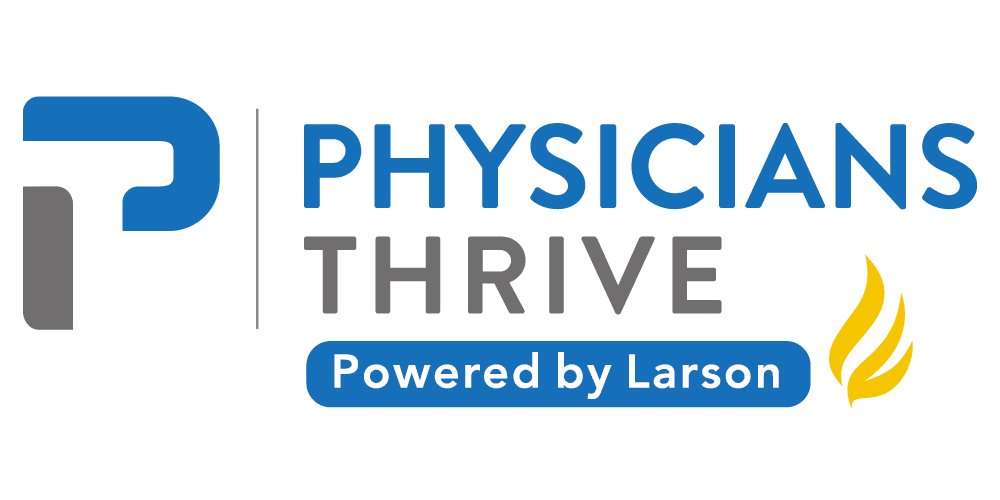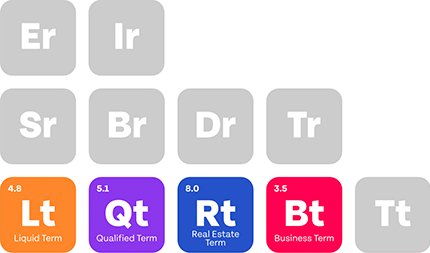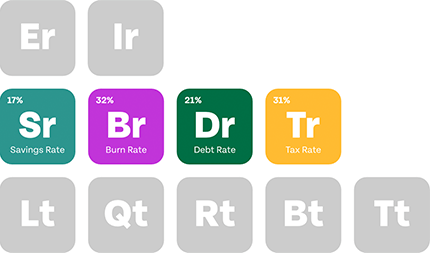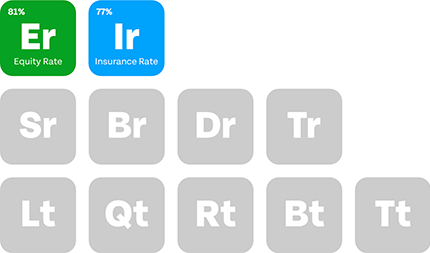Group disability insurance is a collective agreement designed to provide financial protection when a member of a defined group becomes unable to work because of a disability or injury.
While it doesn’t provide as strong financial protection as private disability insurance, it’s still a valuable insurance tool for any physician.
In this guide, we’ll explain everything you should know about group disability insurance to help you determine whether it’s sufficient for your needs.
Key Takeaways
- Group disability insurance replaces income if employees become temporarily or permanently disabled.
- Short-term policies provide immediate coverage; long-term policies protect against extended disabilities.
- Benefits typically cover around 60% of income but can be significantly reduced after taxes.
- High earners, like physicians, often supplement group coverage with individual disability policies.
Table of Contents
What Is Group Disability Insurance?
Unlike individual disability insurance, which is purchased independently, group disability insurance is typically offered as an employee benefit, partially or fully subsidized by the employer.
Much like any other type of disability insurance, if a covered employee becomes disabled and cannot work, they file a claim and, after a waiting period, receive benefits that replace a portion of their lost income.
The disability doesn’t have to be permanent. For example, a woman with pregnancy complications can benefit from short-term disability insurance because she’ll need more recovery time compared to an uncomplicated pregnancy.
In other words, regardless of how long the disability affects you, as long as it qualifies, you can file for benefits. Covered conditions include, but aren’t limited to:
- Broken bones or injuries resulting from accidents.
- Debilitating conditions like cancer, arthritis, and chronic pain.
- Some mental conditions like anxiety or depression, though proper documentation and verification are required by a licensed therapist.
Types of Group Disability Coverage
There are two primary types of group disability insurance: short-term disability (STD) and long-term (LTD) disability insurance. Both work on the same principle but differ in benefit duration and elimination periods. Here’s how:
Short-Term Disability Insurance
This type of coverage is designed to replace a portion of your income for a relatively short period, ranging from a few weeks to several months.
STD is useful for sudden but temporary disabilities, like complicated pregnancies and injuries, which should resolve within weeks to months.
Accordingly, the elimination period (which is how long you have to wait between the onset of the disability and getting benefits) is short (often a few days).
After all, waiting two or more months for benefits to start after an accident wouldn’t make sense. You might have already recovered by then and suffered income loss without compensation.
Long-Term Disability Insurance
LTD insurance provides income replacement for a much longer duration (sometimes up to retirement age), but the elimination period lasts for months.
This insurance is designed to protect against more serious and prolonged disabilities that can prevent you from working for months and potentially decades.
We have a complete guide on the difference between both types of disability insurance if you want in-depth details. But for now, here’s a table comparison:
| Feature | Short-Term Group Disability Insurance (STD) | Long-Term Group Disability Insurance (LTD) |
|---|---|---|
| Benefit Duration | Relatively short (weeks to months, e.g., 3-6 months) | Longer duration (years, potentially to retirement age) |
| Waiting Period (Elimination Period) | Short (days to weeks, e.g., 0-14 days) | Longer (months, often aligns with STD benefit period, e.g., 90 days, 6 months) |
| Purpose | Cover temporary disabilities, immediate income replacement | Cover prolonged disabilities, long-term income security |
| Benefit Start | Begins relatively quickly after disability | Begins after a longer waiting period |
| Benefit Amount | Percentage of weekly salary | Percentage of monthly salary, often with a maximum monthly benefit |
| Definition of Disability | Typically focused on the inability to perform your “own occupation” | May start with “own occupation” and later change to “any occupation” |
| Cost (to Employee) | Generally lower premiums than LTD | Generally higher premiums than STD |
| Integration with Other Benefits | Less likely to integrate directly with SSDI | Often integrates with SSDI and Workers’ Compensation |
Group Disability Insurance Coverage and Benefits
Group disability plans typically provide a totally disabled covered employee with benefits of up to 60% of their pre-disability income, usually with a specified maximum benefit cap, such as $10,000 per month.
An important point that many people overlook is that benefits from group disability insurance are typically taxed. The amount of taxes you pay depends on how much your employer contributed to your monthly premiums.
These taxes can significantly reduce the effective replacement rate. For example, a policy that nominally covers 60% of salary might effectively provide only 35% to 40% of their after-tax income.
hat’s why many high-earning professionals, like physicians, supplement with private disability insurance policies. While these policies have higher premiums, they often provide better monthly benefit limits and tax-free benefits.
Eligibility and Underwriting
One of the biggest pros of group disability insurance is its typically lenient underwriting requirements, which makes it accessible to a broader range of employees regardless of their health status.
Many group plans offer guaranteed issue coverage, meaning employees don’t even need to undergo medical examinations to qualify.
Advantages of Group Disability Insurance
For Employees
The primary benefits for employees include:
- Lower premium costs compared to individual plans.
- Easier qualification with minimal or no medical underwriting.
- Convenient enrollment through employer benefits programs.
- No need for individual policy shopping or comparison.
For Employers
Employers gain a few advantages as well, including:
- Plan design flexibility that allows customization to fit budget constraints.
- Tax-deductible premium payments.
- Valuable recruitment and retention tool (since the coverage stops if the employee leaves).
How Does Group Disability Insurance Coordinate With Other Benefits
When you’re employed, group disability insurance is but one of several other benefits you may receive. Here’s how your disability insurance coordinates with each:
Paid Time Off (PTO) and Sick Leave
During the elimination period, employees can choose to utilize their accrued PTO or sick leave during the elimination period of their STD or LTD. This can help bridge the gap in income before disability benefits begin.
Employees can also use their remaining PTO to supplement their disability benefits if the benefit amount doesn’t adequately replace their pre-disability income.
Health Insurance
Becoming disabled doesn’t automatically terminate your employer-sponsored health insurance. However, your employment status might change while on disability leave, so your health insurance coverage can be affected.
Still, you can remedy that by continuing to pay your portion of the premiums out of pocket to maintain coverage.
Plus, if your employment is terminated due to disability, you will likely be eligible for COBRA(Consolidated Omnibus Budget Reconciliation Act).
COBRA allows you to continue your group health coverage for a limited time, but you’ll be responsible for the full premium cost + an administrative fee.
Life Insurance
Similar to health insurance, your employer-sponsored life insurance coverage may continue while you are on disability leave, but you might need to continue paying premiums.
Note that the amount of your life insurance coverage might be linked to your salary, which could be affected while on disability.
However, some group life insurance policies include a “waiver of premium” provision if you become completely disabled. This means your life insurance coverage may continue without you having to pay premiums while you remain disabled, as defined by the life insurance policy.
Retirement Plans (401(k), Pensions, etc.)
Typically, both employee and employer contributions to retirement plans cease while you are on disability leave, as these contributions are usually tied to active employment earnings. This can impact your long-term retirement savings.
Some retirement plans may have specific provisions for disability, such as allowing for early withdrawals without penalty under certain circumstances. You need to consult your plan administrator for such details.
Final Words
Group disability insurance can provide you with an acceptable backup in case disability, illness, or accidents stop you from working.
However, the combination of lower benefit limits and taxable benefits raises questions about whether group coverage alone is sufficient for high earners like physicians.
That doesn’t mean that it’s useless, but sometimes, you need to supplement with individual disability insurance, but then comes the matter of its high premiums. Navigating these options can be complex, especially for busy medical professionals.
Still, it doesn’t always have to be like that. Physicians Thrive specializes in helping doctors assess their financial situation with an understanding of the unique challenges that medical professionals face.
Contact us, and we’ll help you understand your financial needs and risk factors so you can make an informed decision about the disability insurance(s) you need.







































